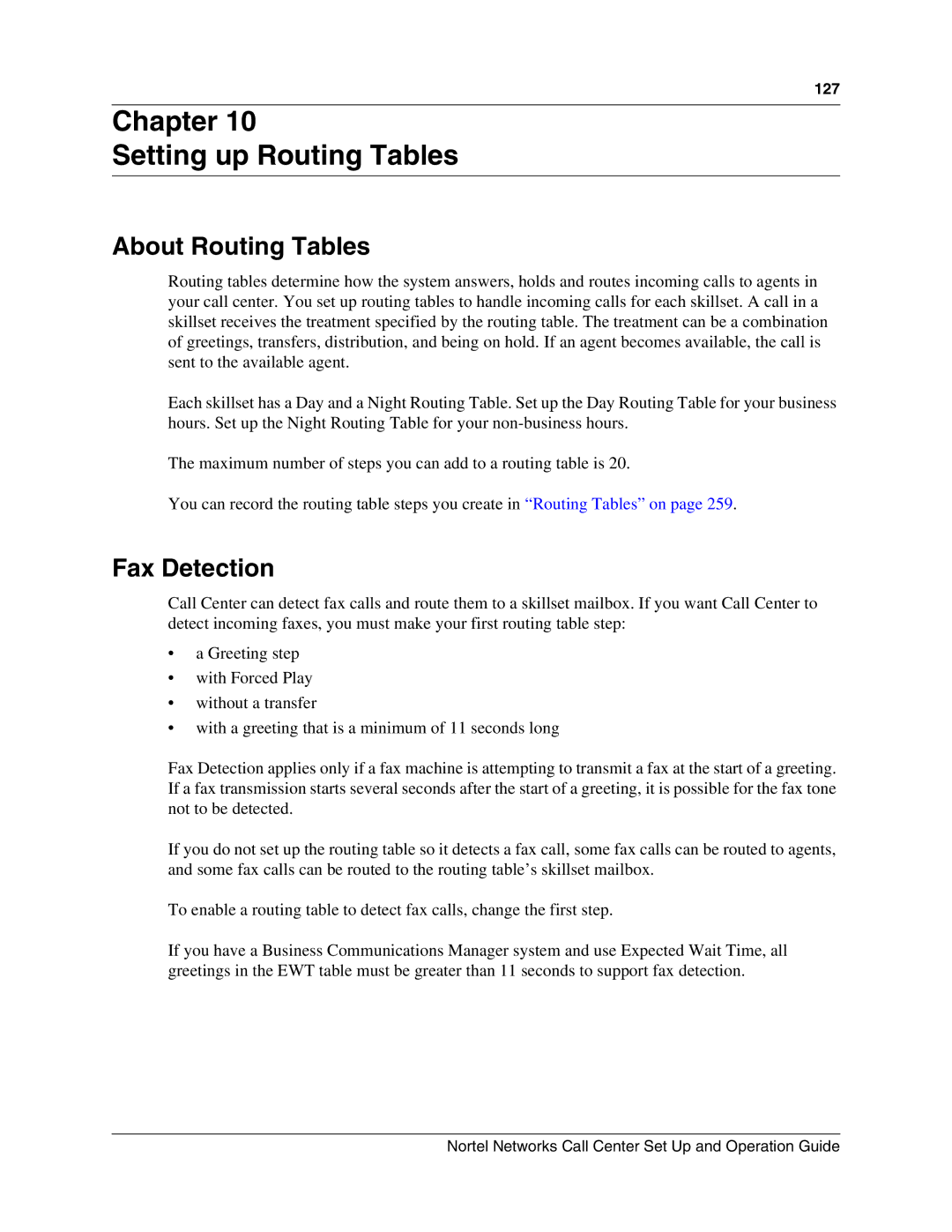
127
Chapter 10
Setting up Routing Tables
About Routing Tables
Routing tables determine how the system answers, holds and routes incoming calls to agents in your call center. You set up routing tables to handle incoming calls for each skillset. A call in a skillset receives the treatment specified by the routing table. The treatment can be a combination of greetings, transfers, distribution, and being on hold. If an agent becomes available, the call is sent to the available agent.
Each skillset has a Day and a Night Routing Table. Set up the Day Routing Table for your business hours. Set up the Night Routing Table for your
The maximum number of steps you can add to a routing table is 20.
You can record the routing table steps you create in “Routing Tables” on page 259.
Fax Detection
Call Center can detect fax calls and route them to a skillset mailbox. If you want Call Center to detect incoming faxes, you must make your first routing table step:
•a Greeting step
•with Forced Play
•without a transfer
•with a greeting that is a minimum of 11 seconds long
Fax Detection applies only if a fax machine is attempting to transmit a fax at the start of a greeting. If a fax transmission starts several seconds after the start of a greeting, it is possible for the fax tone not to be detected.
If you do not set up the routing table so it detects a fax call, some fax calls can be routed to agents, and some fax calls can be routed to the routing table’s skillset mailbox.
To enable a routing table to detect fax calls, change the first step.
If you have a Business Communications Manager system and use Expected Wait Time, all greetings in the EWT table must be greater than 11 seconds to support fax detection.
Nortel Networks Call Center Set Up and Operation Guide
